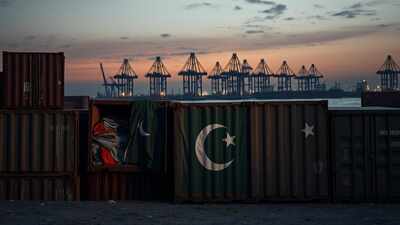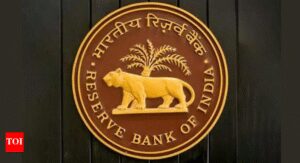
Pakistan failed to meet its annual export target for the fiscal year 2024–25, with exports totalling $32.106 billion, falling short of the government’s target of $32.341 billion, according to data released by the Pakistan Bureau of Statistics (PBS). As per the news agency ANI, the shortfall comes despite a modest year-on-year export growth of 4.67 per cent.Imports, meanwhile, surged to $58.38 billion, exceeding the official projection of $57.283 billion. This pushed the annual trade deficit to $26.274 billion, widening beyond the projected $24.941 billion. According to ARY News, the shortfall in exports combined with higher-than-expected import volumes has intensified challenges in managing the country’s external account.To support the trade sector, Pakistan’s ministry of maritime affairs has slashed charges for export and transhipment containers by 50 per cent, effective July 1, 2025. As per the Pakistan government’s notification, this relief applies to Port Qasim, including Marginal Wharf, FOTCO, and PIBT, but excludes empty containers. Wharfage charges at DP World have also been eased to incentivise outbound trade flows, reported ARY News.However, Pakistan’s exporters continue to face external headwinds. The Indian government’s sweeping ban on goods of Pakistani origin, imposed after the Pahalgam terror attack and effective since May 2, 2025, has further strained freight operations. Indian ports no longer allow the anchoring of vessels carrying Pakistani goods, a move that has significantly raised shipping and insurance costs.“Mother vessels are not coming to Pakistan due to this Indian action, which delays our imports by 30 to 50 days,” said Karachi Chamber of Commerce and Industry president Javed Bilwani, quoted by news agency PTI. Exporters have also noted that the additional burden of feeder vessels has hiked logistics costs.While exporters say the ban has had a limited direct impact on volumes, the overall tightening of trade routes comes amid Pakistan’s already fragile supply chains. “There is no significant impact on exports…, except for a rise in insurance costs,” said Aamir Aziz, a textile exporter, as cited by PTI.Pakistan’s reliance on imported raw materials for value-added exports makes disruptions even more consequential. Formal trade ties between India and Pakistan have remained frozen since 2019, with bilateral trade shrinking from $2.41 billion in 2018 to just $1.2 billion in 2024, as per PTI.














